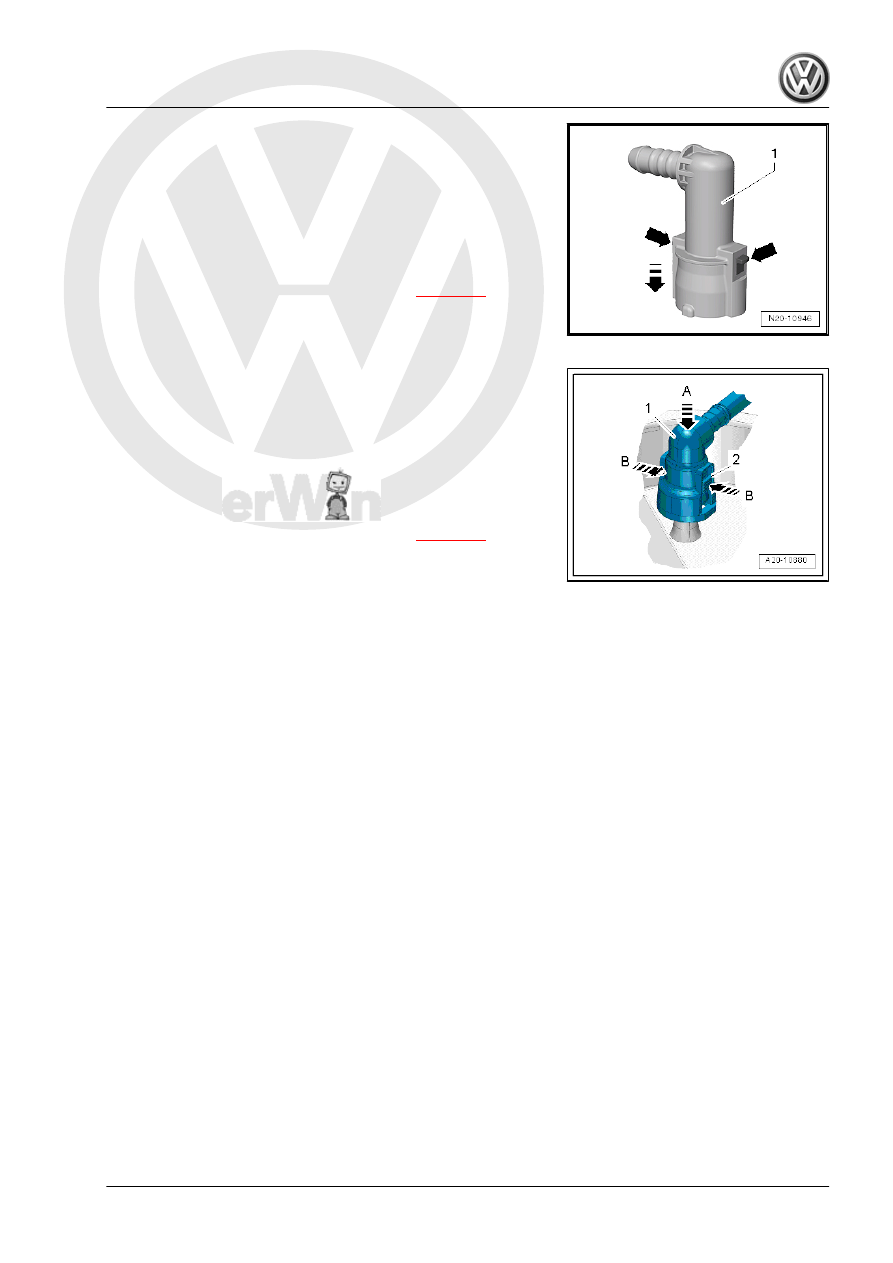Volkswagen Golf / Golf GTI / Golf Variant. Manual - part 750

Version 6
Connector coupling with right and left release buttons -arrows-:
Opening
– Press the connector coupling -1- in the direction of the
-arrow- and hold it down.
– Press the release buttons -arrows- and remove the connector
coupling.
Note the color coding when installing. Refer to
The connector couplings must »audibly« engage when locking.
– Pull on the connector coupling to check for secure fit.
Version 7
Connector coupling -1- with right and left release buttons -2-:
Opening
– Press the connector coupling -1- in direction of the -arrow A-
and hold it down.
– Push the release buttons -2- in the direction of -arrow B- and
remove the connector coupling -1-.
Note the color coding when installing. Refer to
The connector couplings must »audibly« engage when locking.
– Pull on the connector coupling to check for secure fit.